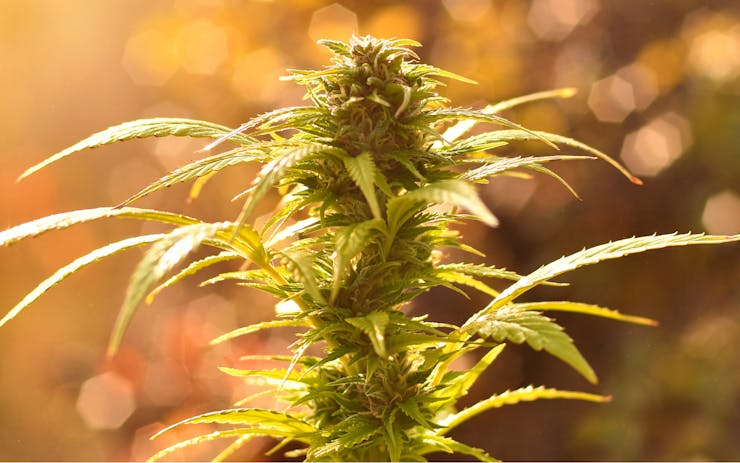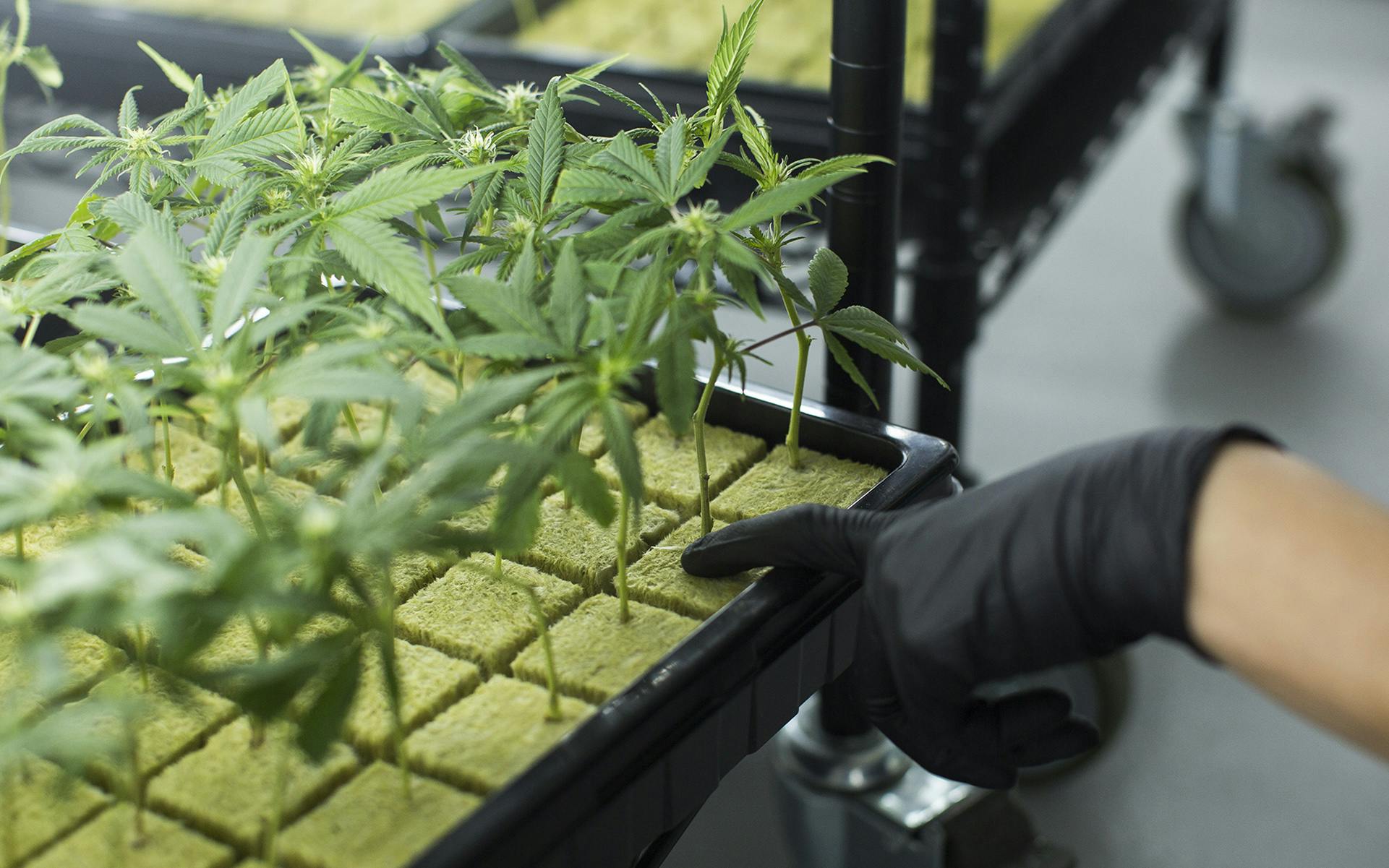This article is sponsored by General Hydroponics, the leading innovator in the field of hydroponics for more than 35 years.
When growing cannabis outdoors, location is everything. Just as large cash crops demand specific climates for optimal growth, so does cannabis. Climate, soil, water, and genetics all dictate whether a cannabis strain can be produced in your region.
Fortunately, cannabis plants can thrive in different climates around the world thanks to the diversity of its genetics. Sativas, with their airy bud structure, can tolerate hotter, more humid climates. Indicas grow dense and resinous buds as protection against the elements and the cold.
Not everyone lives in climates suitable for cannabis, so in many cases indoor gardens with controlled environments make the most sense. But if you’re looking to harness the vast outdoors for cannabis cultivation, this guide can help you understand some of the key factors affecting the outcome of your plants, including climate, genetics, grow medium, and water. Specific geographic regions and their climate attributes may affect your grow, so learn how you can adjust your crop accordingly.
The Best Climate for Cannabis Plants
We all know that climate varies from region to region, but what’s the perfect climate for cannabis, and where might a grower choose to grow indoors instead?
Outdoors, most cannabis thrives in climates akin to the Mediterranean region. This climate can be described as warm to hot in the summer followed by mild fall weather with minimal rainfall. Cannabis plants love the hot days followed by warm nights. The West Coast – California, Oregon, and some parts of Washington – best match this Mediterranean climate in the U.S.
In areas with more rain and lower temperatures, your choices of cannabis strains become much more limited. Certain genetics can grow in wetter, drier, colder, or hotter climates. Some regions have cold fall temperatures that require strains with faster flowering periods. Knowing your strain’s genetics is just as important as knowing the climate in which you’ll be growing.
Growing indoors will allow you to grow cannabis in regions that are generally unsuitable for outdoor production. However, controlling the climate indoors can be difficult in areas with extremely hot or cold temperatures; furthermore, the costs associated with running A/C or heaters can cut deeply into your profit margin.
Greenhouses are another popular alternative, as they allow you to harness the natural sunlight while protecting the plants from the elements. You can also control flowering cycles by using a light deprivation system to control a plant’s exposure to sunlight. While greenhouses might still require additional heating or A/C, the costs tend to be significantly less than indoor operations.
Browse Climate Control Products
Cannabis Genetics and Their Preferred Climates
As mentioned, different strains are suitable for various climates, depending on their genetic makeup. Genetics dictate a flower’s structure, which helps it to survive in its local environment.
There are three primary cannabis types that are involved in breeding and strain development, and each offers different benefits as they adapt to a particular climate.
Sativa: Historically, sativa genetics have thrived in equatorial regions around the world. The plant and bud structure are generally more airy, which helps the plants handle high temperatures and humidity levels. For this reason, sativas are popular in areas with higher humidity and rainfall.
Here’s the downside: sativas tend to have long flowering cycles. Tropical climates generally don’t have cold seasons, so sativas can take their time flowering – sometimes taking as long as 14 weeks. For regions with colder autumns, that lengthy flowering cycle won’t work.
Indica: Indica plants come from the dry, mountainous regions of the Middle East. With a plant and bud structure that is typically short, bushy, and dense, indica plants can handle colder temperatures. However, they perform poorly in areas with high humidity and heavy rainfall. Anticipating the cold fall season, indica strains tend to finish flowering quickly – typically in 7 to 9 weeks – making them a suitable choice for areas with shorter summers and colder autumns.
Ruderalis: Ruderalis is a type of cannabis commonly used in the breeding of autoflowering and high-CBD strains. It can thrive in inhospitable regions such as Alaska and Russia, and while it doesn’t produce a high THC content, it can be bred with more potent genetics to produce more resilient hybrid strains.
Optimal Cannabis Grow Mediums
A garden is only as good as the ground it grows in, which is why all cannabis cultivators must take great care in their soil.
Few growers will use soil native to the land they’re planning to till. However, if you believe this local soil to be rich and healthy, you can test its nutrient and pH levels to see if it’s indeed suitable. Ideally, soil will contain micro and macro nutrients and have a pH between 6.0 and 7.0. After receiving the test results, you can amend your soil by adding any missing nutrients and balancing the pH level.
Consider these tendencies when evaluating your soil:
- Sandy soil tends to be more acidic, with lower nutrient levels.
- Clay soil is more alkaline with a high pH level, but will be nutrient-dense.
- Soil fed by plant debris is considered a woodland soil – it will be closest to a balanced pH level with a variety of nutrients.
If a quality soil is not available locally within your price point, consider growing with hydroponics. Sourcing a hydroponic medium in a dry, arid climate can be cheaper and easier than sourcing quality soils.
Browse Hydroponic Products
Water Quality by Region
Even water differs from region to region, and it’s important to know the pH level of your local water supply. If the pH level is too high or too low, it can shock your plant and prevent it from taking in the nutrients it needs to thrive. Generally speaking, water on the West Coast and in the Midwest have a higher pH level than water on the East Coast, especially the Northeast.
To fix the pH level of the water, add either pH-up or pH-down solutions. Acidic or alkaline water is one of the most commonly overlooked issues in cannabis gardens – pH levels can change in your water source without you even noticing!
You should also note that well water varies in mineral content across different regions, but an RO filter can be used to remove extra minerals and chlorine. If you’re aiming to maintain rich microbial life in your water, consider using local water testing to determine what filtration is necessary.
Regional Growing Tips
Northwest: West of the Cascade Mountain Range is a wet place; heavy rains and a lack of sunshine can make it difficult to cultivate cannabis outdoors, and constant attention to mold development is required. Growing in greenhouses or indoors, however, can fix these problems. West of the Cascades, the woodland soil is rich with nutrients and may demand few amendments before planting your garden.
East of the Cascades, the climate is much drier with lots of sunshine. This region can be great for cultivating cannabis, but cold fall temperatures can become an issue. In general, early flowering hybrid strains are ideal for the Northwest. The soil in this region is less rich and will need to be supplemented with nutrients before planting your crop.
The Northwest region offers plenty of fresh, clean water to keep your plants healthy and happy.
Southwest: The Southwest’s dry climate can become debilitatingly hot. Cannabis plants thrive where nighttime temperatures stay above 60°F, while daytime highs over 100°F will slow their growth. When relying on A/C, growing indoors in this region can be costly, especially in the summer.
Sativas and sativa-dominant hybrids are the best choice for outdoor growers in the Southwest, as they can handle higher temperatures and will have time to finish their long flowering cycles.
Soil in the Southwest is often lacking necessary nutrients, so purchase your own soils or utilize a hydroponic system. Water is more scarce and expensive in the Southwest, so it’s a good idea to use conservative hydroponic methods and drip lines.
Midwest: The Midwest has extremely variable climates. Summers can be hot with thunderstorms and short periods of heavy rainfall. Moisture followed by high temperatures can lead to molding. Also, winters may arrive early, preventing strains from fully completing their flowering cycle. When choosing a strain, keep in mind that quick-finishing indicas and indica-dominant hybrids can better handle temperature swings.
Soils in the Midwest can be nutrient-rich if they haven’t been farmed, but land that has seen heavy farming without crop rotation might lack nutrients. Get your soil tested to see if it’s usable before purchasing new soils. Check the pH level of your water and be aware that any active mining practices can drastically alter the quality of a water source.
Northeast: The Northeast can be a great place to cultivate cannabis outdoors, though temperatures can be a bit variable. Its fall season is shorter and its summers humid, but overall this climate is good for cannabis cultivation. When growing in this region, you want to have early-finishing strains that can also handle summertime humidity. Try growing hybrid strains that are less dense and finish flowering early.
Soils can be rich and healthy in the Northeast, so consider amending the soil already available to you. However, rocky and heavy clay soils are also common. Fresh water in this region is abundant and generally increases in quality the further north you go.
Southeast: The high humidity levels of the Southeast region require you to stay away from indica genetics. Buds must be light and airy to survive without molding, and they also need to be able to handle high temperatures. Sativa genetics fare best in these conditions and will be able to finish with the mild fall weather. If you want to grow a diverse range of genetics in the Southeast, indoor gardens are probably your best bet.
Southeastern soils can be rich and healthy; this soil may be suitable for your cannabis garden with a few nutrient amendments. Carefully monitor the pH level of your water for changes.








